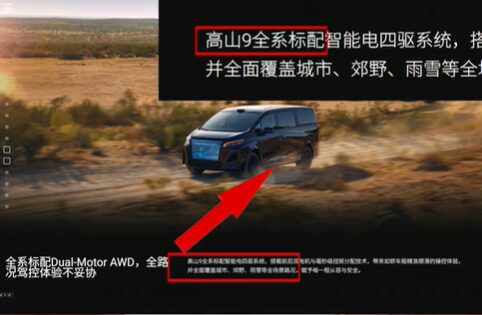Faraday Future’s Desperation? Why a Chinese MPV is the Real Winner of Jia Yueting’s $100M Controversy

As an analyst on the ground in China, I’ve learned that the most revealing market signals often come not from soaring sales charts, but from the strange, almost inexplicable events that defy conventional logic. The recent surge in sales for WEY’s Gaoshan MPV is one such case. On the surface, it’s a successful product launch. But dig a little deeper, and you’ll find the narrative is inextricably linked to the high-wire survival act of Faraday Future (NASDAQ: FFIE) and its enigmatic founder, Jia Yueting. This is the bizarre story of the Faraday Future WEY Gaoshan connection, and why the biggest winner may not be who you think.
The Anomaly in the Data: A Sudden and Convenient Sales Spike
First, the facts. Great Wall Motor’s (GWM) premium brand, WEY, saw sales for its new flagship MPV, the Gaoshan (高山, meaning “High Mountain”), skyrocket by nearly 80% in June compared to the previous month. In China’s hyper-competitive premium MPV segment, this is a remarkable feat.
But the timing is what raises eyebrows. This sales explosion coincided almost perfectly with Faraday Future unveiling its latest vehicle, the FF 91 2.0 Futurist Alliance, and boldly claiming over 10,000 pre-orders. The problem? This “new” vehicle looked suspiciously familiar.
The Heart of the Controversy: The “Faraday Future WEY Gaoshan” Connection
To call the resemblance between the FF 91 Futurist and the WEY Gaoshan “striking” would be an understatement. They are, for all intents and purposes, automotive twins. Aside from Faraday Future swapping the front grille for a screen, the body lines, silhouette, and core design language appear to be a direct copy.
The smoking gun, however, came from Faraday Future’s own official Chinese website. For a brief period, the vehicle’s description page inexplicably contained the word “Gaoshan” (高山). The term was quickly deleted, but not before screenshots circulated widely, leading experts to a simple, damning conclusion: it was likely a “copy-paste” error, a forgotten artifact from the source material.

This controversy only deepens when you examine the product itself:
- A Useless Front Screen? The vehicle’s signature feature is a front-mounted screen that can display navigation directions to onlookers. The practical utility is questionable at best, leading to cynical jokes online about whether Jia Yueting was simply trying to offload old inventory from his failed LeEco TV venture.
- An Unbelievable Price Tag: Despite the glaring design questions, the car is priced at a breathtaking $80,000 USD. This price point makes one thing clear: this vehicle is not for the mass market. It’s a prop designed to impress a very different audience—investors.
Jia Yueting’s Playbook: Sell the Story, Not the Car
This bizarre episode is not an isolated incident. It’s a classic move from the Jia Yueting playbook, a strategy that can be summarized as “Asset-Light, Borrowed Shell.”
- Hype the Concept: Unveil a revolutionary vision that captures the imagination.
- Market the Dream: Spend heavily on glossy presentations and media buzz to create an aura of success.
- Secure the Funding: Leverage the inflated hype to attract massive investments from those buying into the dream.
- Under-Deliver on Product: Actual production and development consistently take a backseat to the performance of fundraising.
Viewed through this lens, the “Faraday Future WEY Gaoshan” affair is just the latest chapter. And it worked. Amidst this controversy, Faraday Future successfully announced it had secured a new round of financing worth approximately $100 million. (Source: Faraday Future Investor Relations)
Conclusion: The Real Winner and a Never-Ending Drama
So, who is the ultimate beneficiary of this high-stakes drama? It’s not Faraday Future, which continues to teeter on the edge of insolvency. Paradoxically, the biggest winner appears to be WEY. Thanks to Jia Yueting, the Gaoshan MPV received an invaluable, nationwide marketing boost at zero cost. While a direct causal link to the sales jump is hard to prove, an unspoken narrative has formed: “This is the car so good, even Faraday Future had to copy it.”
This leads to a sobering conclusion. For Jia Yueting, building cars may be a side project. His primary business seems to be staging a grand, perpetual drama for investors, with the central plot being his “imminent return to China” to settle all debts and lead a revolution. This “clone car” controversy is just another act in that play, a spectacle far removed from the genuine innovation driving the global auto industry.
Deeper Dive: Recommended Books for Deeper Insights
For those who wish to explore the themes discussed today in greater detail, here are two books I personally recommend.
[Billion Dollar Whale: The Man Who Fooled Wall Street, Hollywood, and the World]
- Why it’s relevant: This book is a masterclass in understanding how charismatic storytelling and audacious vision can be used to orchestrate monumental financial schemes. It provides a fascinating parallel to the strategies of hype and capital acquisition seen in the tech and EV worlds.
- 👉 [Insert Amazon Affiliate Link]
Deeper Dive: Recommended Books for Deeper Insights
For those who wish to explore the themes discussed today in greater detail, here are two books I personally recommend.
[Billion Dollar Whale: The Man Who Fooled Wall Street, Hollywood, and the World]
- Why it’s relevant: This book is a masterclass in understanding how charismatic storytelling and audacious vision can be used to orchestrate monumental financial schemes. It provides a fascinating parallel to the strategies of hype and capital acquisition seen in the tech and EV worlds.
- 👉 [Amazon Link]
This post contains affiliate links. As an Amazon Associate, I earn from qualifying purchases, which helps support this blog at no extra cost to you.
My AI Jazz Project: